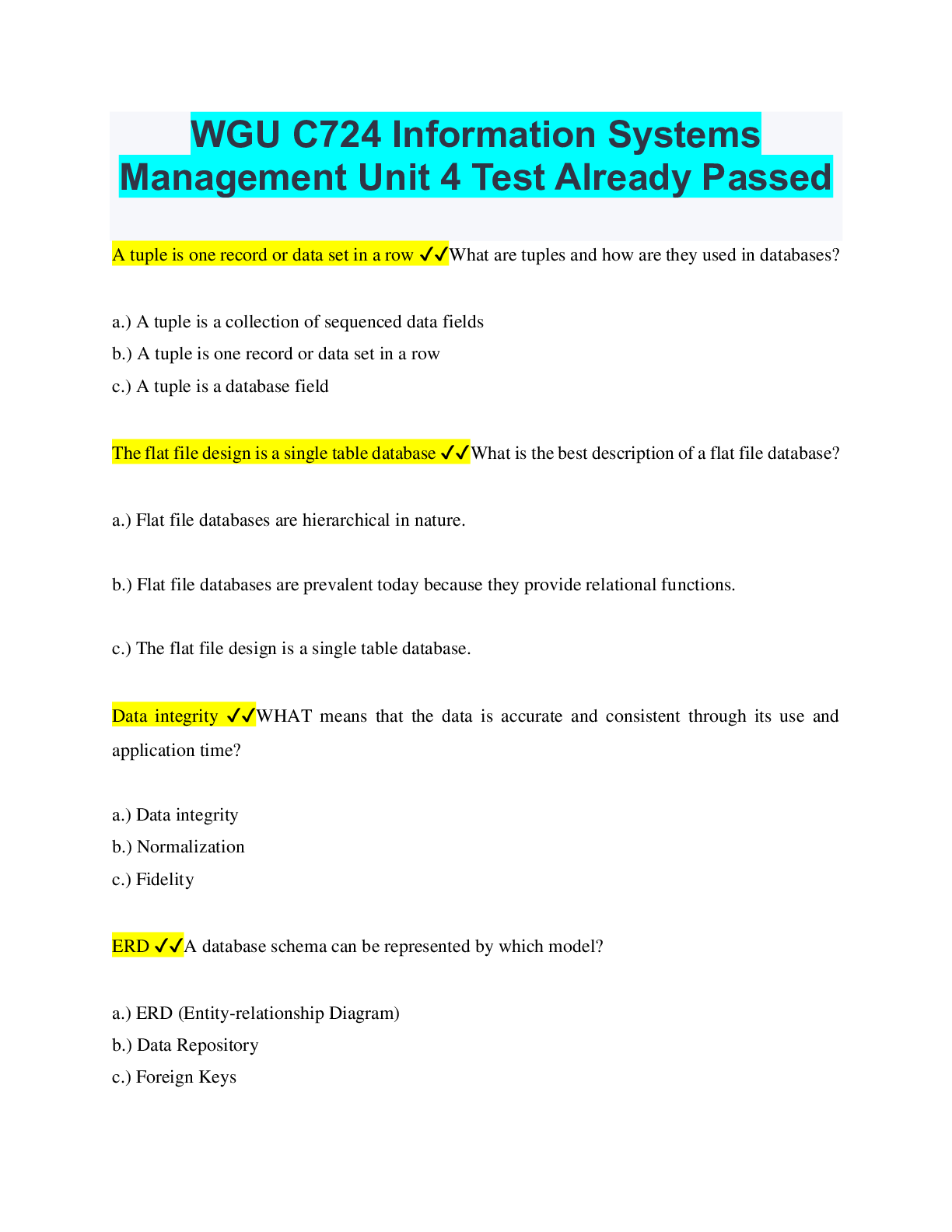Information Technology > QUESTIONS & ANSWERS > WGU C724 Information Systems Management Unit 6 Test Answers (100% correct), Western Governors Univer (All)
WGU C724 Information Systems Management Unit 6 Test Answers (100% correct), Western Governors University.
Document Content and Description Below
C724 Unit 6 Test Answers The six formal steps that need to be followed to develop an information system is known as what? a) Program specifications b) System development life cycle c) System an... alytical cycle Which of the following is not an organizational change category to consider when implementing a new information system. d) Quality e) Automation f) Rationalization Which method below uses fourth generation computer languages? g) End user development h) Agile i) RAD What is not a development stage in the waterfall model? j) User Requirements k) Conversion l) System analysis Which of the following is not a component of a feasibility Study? m) Managerial n) Technical o) Economic ABC Playground Company has been asked to build a new playground for a local elementary school. The project must be completed before the first day of school. Which of the following steps would increase the likelihood of finishing the project on time? p) Assign the least experienced workers to the tasks on the critical path. q) Have the most experienced workers complete tasks on the critical path r) Evenly divide the experienced workers between all tasks for the project 2. What is UML (Unified Modeling Language)? a) UML is a general purpose modeling language b) UML is a hypertext language c) UML is a computer language, like C++ 3. Which of the following is not a key factor to consider when evaluating a system alternative? a) Compatibility b) Limitations c) Economic d) Brand 4. Which of the following is not a factor that must be considered when implementing a new information system? a) User b) Competition c) Resistance to change d) Technical ability 5. What is the difference between ICR (Intelligent Character Recognition) and OCR (Optical Character Recognition)? a) ICR is an intelligent or advanced form of OCR b) ICR uses optical bar codes, whereas OCR recognizes characters c) ICR is intelligent and not prone to errors, like OCR 6. [True/False] Although software patches fix bugs, they are expensive to code and can take time. a) True b) False 7. What is the purpose of a general MIS evaluation? a) To analyze system performance. b) To speed up system response. c) To review system cost effectiveness 8. There is a higher chance of failure in information system projects if __________________ do not use and leverage the system on behalf of their organization. a) Employees b) Executives c) Managers 9. What is considered to be a low level security risk during system pot-implementation? a) Low level is characterized by noticeable impact to the organization. b) Low level is characterized as severe impairment of an organization. c) Low level is characterized by complete loss of organizational capabilities. 10. A systems analyst should try to have an understanding of WHAT processes? a) Management b) Change c) Business 11. Why must a systems analyst be a good communicator? a) A systems analyst must be a good communicator because he/she is the project manager b) A systems analyst must be able to communicate system capabilities and benefits c) A systems analyst must be a good communicator because he/she will use the system 12. Because feedback is not readily available with written communication, the content must be accurate and contain sufficient detail. Which of the following is most likely to increase the audience understanding of written communication? a) Action-specific verbs b) Acronyms c) Technical terms 13. What category of CASE (Computer-Aided Software Engineering) does Microsoft Visual Basic fall under? a) Tools b) Environments c) Workbenches 14. Which of the following is a great, free, and ubiquitous source of information for systems analysts? a) Internet b) Textbooks c) Library 15. What are the classifications of cloud computing? a) Public, private, and hybrid b) In-house, remote, and hybrid c) Virtual, multi-core, and distributed 16. Which of the following is not a step in the decision-making process? a) Select team b) Develop alternatives c) Define problem 17. The Intelligence phase in the decision-making process consists of _____________ Identification, and understanding the problem. a) Discovery b) Analysis c) Solution 18. What type of management information systems do operational and middle management use for structured decisions? a) Data warehouse systems b) Transactional processing systems c) Analytical processing systems 19. Which answer best completes the following sentence? Business intelligence consists of databases, data warehouses and __________________? a) Analytics b) Algorithms c) Methods 20. What is the function of the data integration service in business intelligence? a) The data integration service gathers and logically mixes business and master data b) The data integration service helps extract value from the data c) The data integration service serves as the depository of all extracted data for the load function of the data warehouse 21. How does a corporation benefit from a business intelligence program? a) Business intelligence re-engineers processes, making companies more productive b) Business intelligence provides new data that was previously not available c) Business intelligence provides automated data collection and reporting reducing labor cost 22. When using the balanced scorecard method, quality would fall under which of the following measurements? a) Customer perspective b) Learning and growth c) Business process d) Financial perspective 23. What is the meaning of outcomes in decision theory? a) Outcomes are the feedback mechanism to decision theory b) Outcomes are possibilities by the agent. c) Outcomes are the consequences of an even 24. How does executive management use executive support systems (ESS)? a) ESS provide executive management data to make structured decisions. b) ESS provide high-level information in KPI format c) ESS data has transaction and production data used by executive. 25. Executive management, who are interacting simultaneously in different locations to collectively participate in the decision-making process, use what type of decision-support system? a) Executive support system (ESS) b) Simple decision support systems (DSS) c) Group decision support systems (GDSS) [Show More]
Last updated: 9 months ago
Preview 1 out of 4 pages

Reviews( 0 )
Document information
Connected school, study & course
About the document
Uploaded On
May 17, 2020
Number of pages
4
Written in
Additional information
This document has been written for:
Uploaded
May 17, 2020
Downloads
1
Views
138

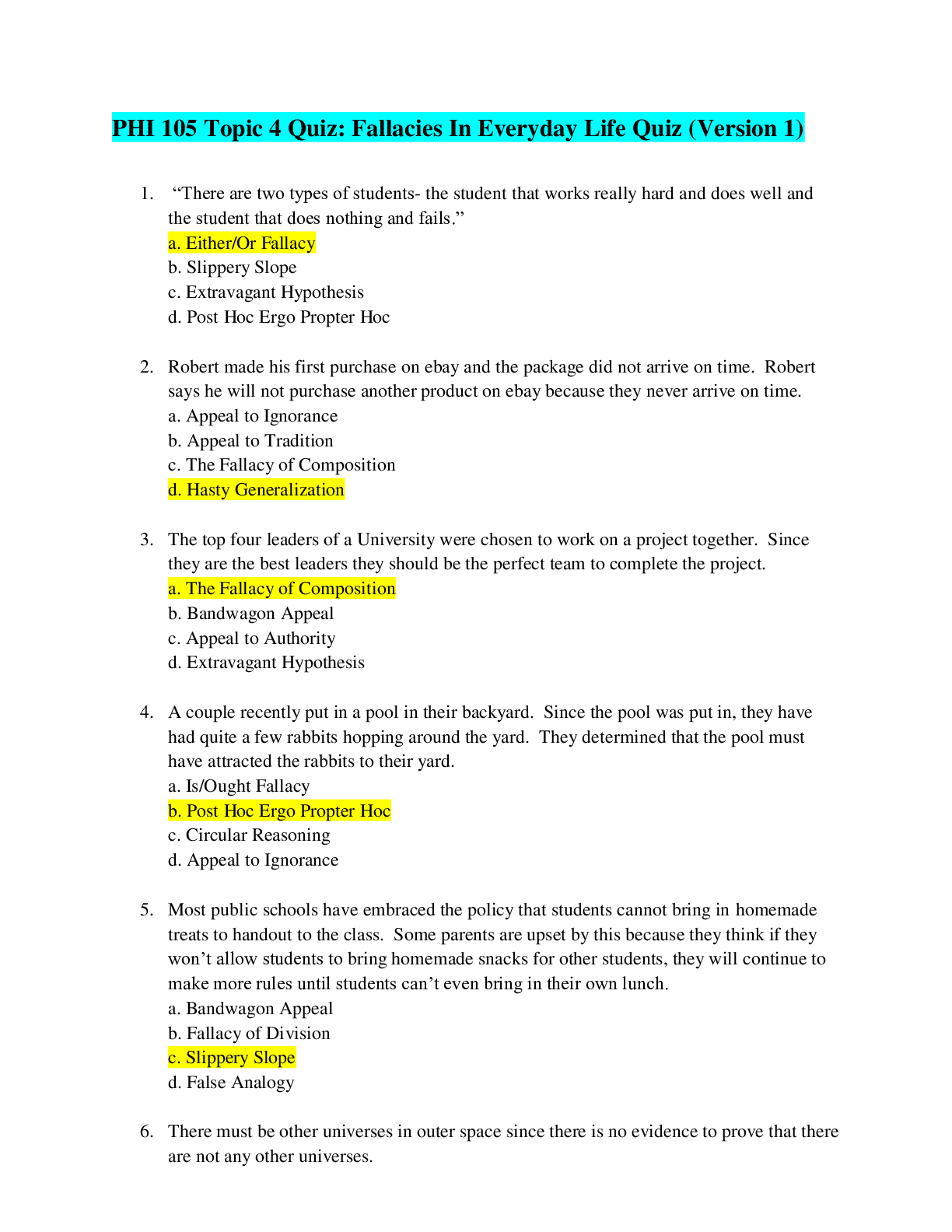


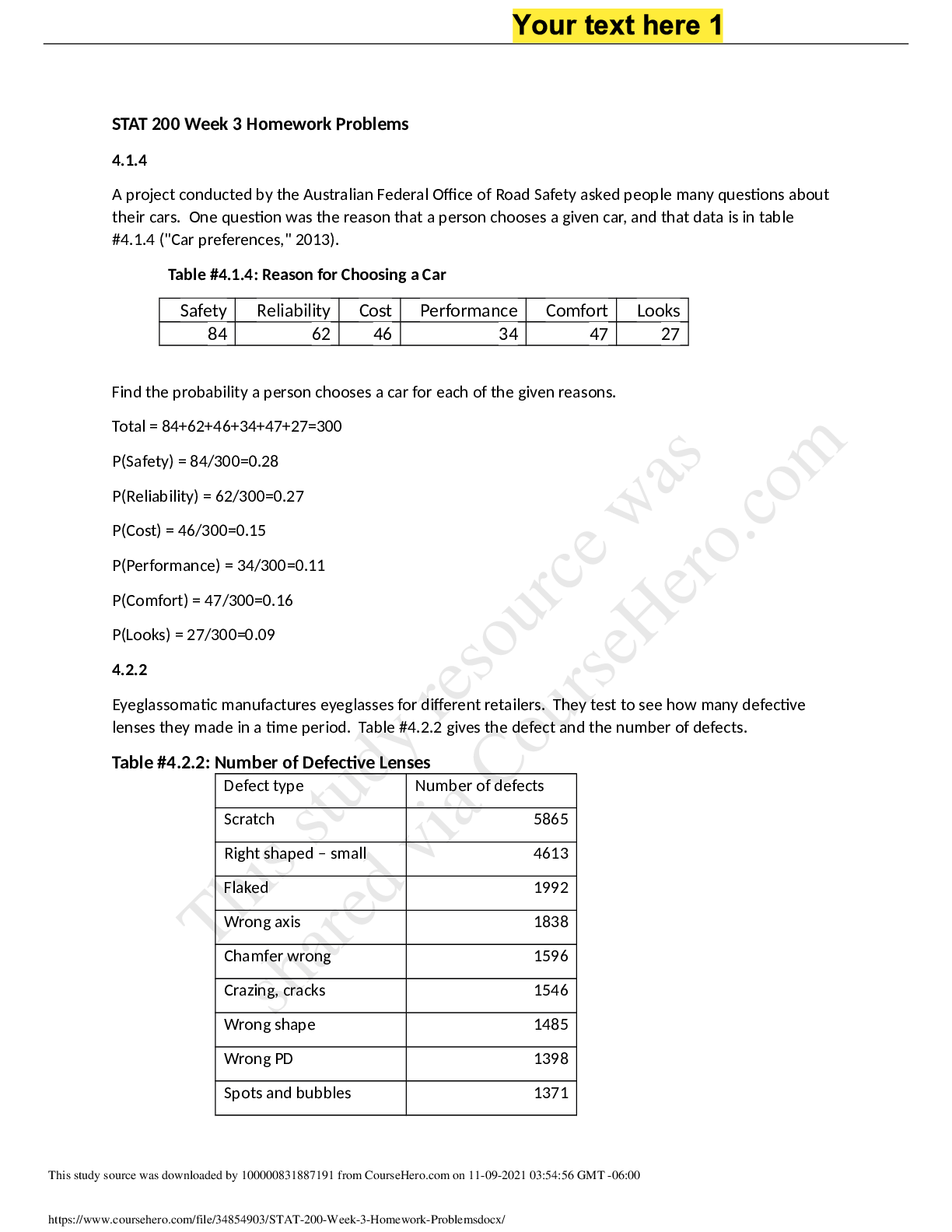

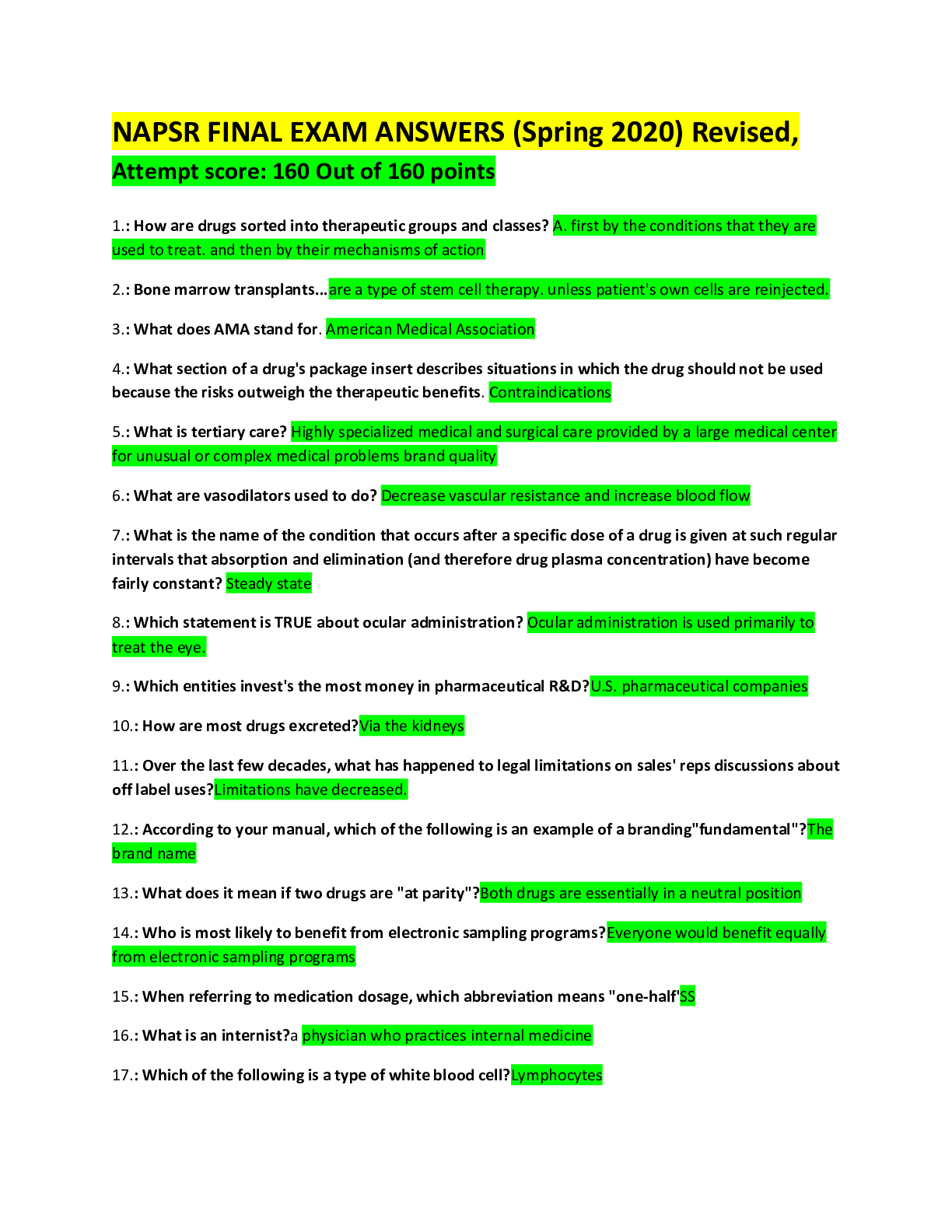

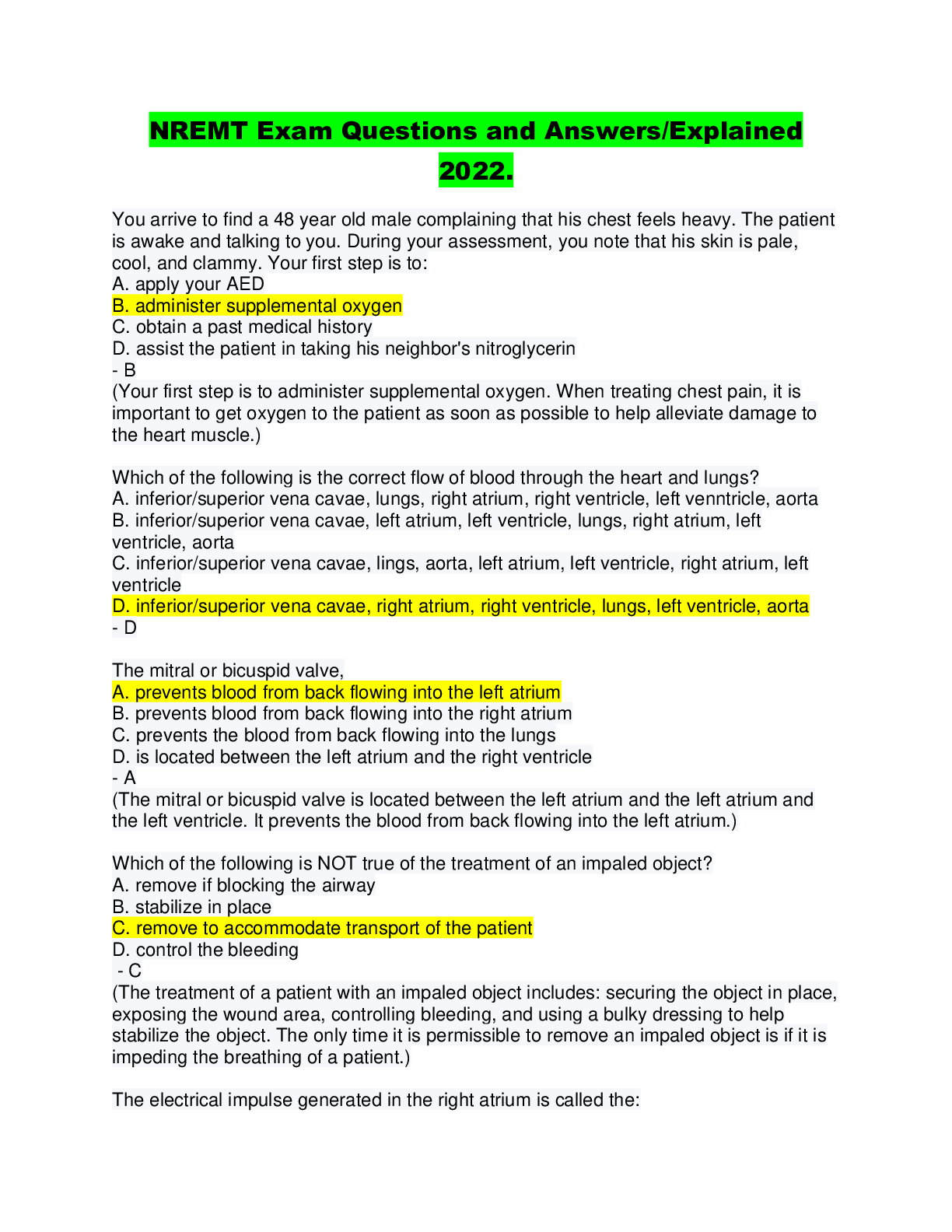
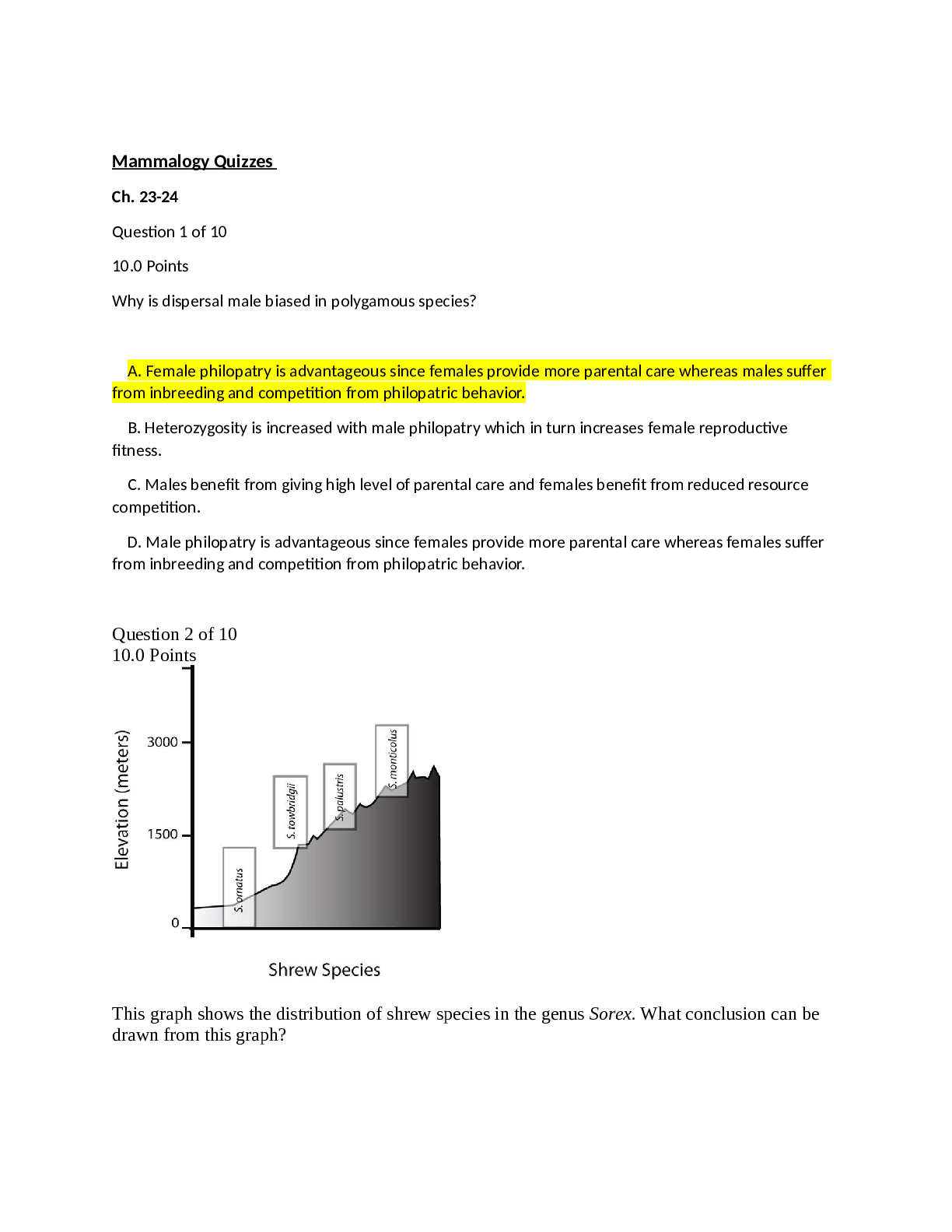
.png)

.png)


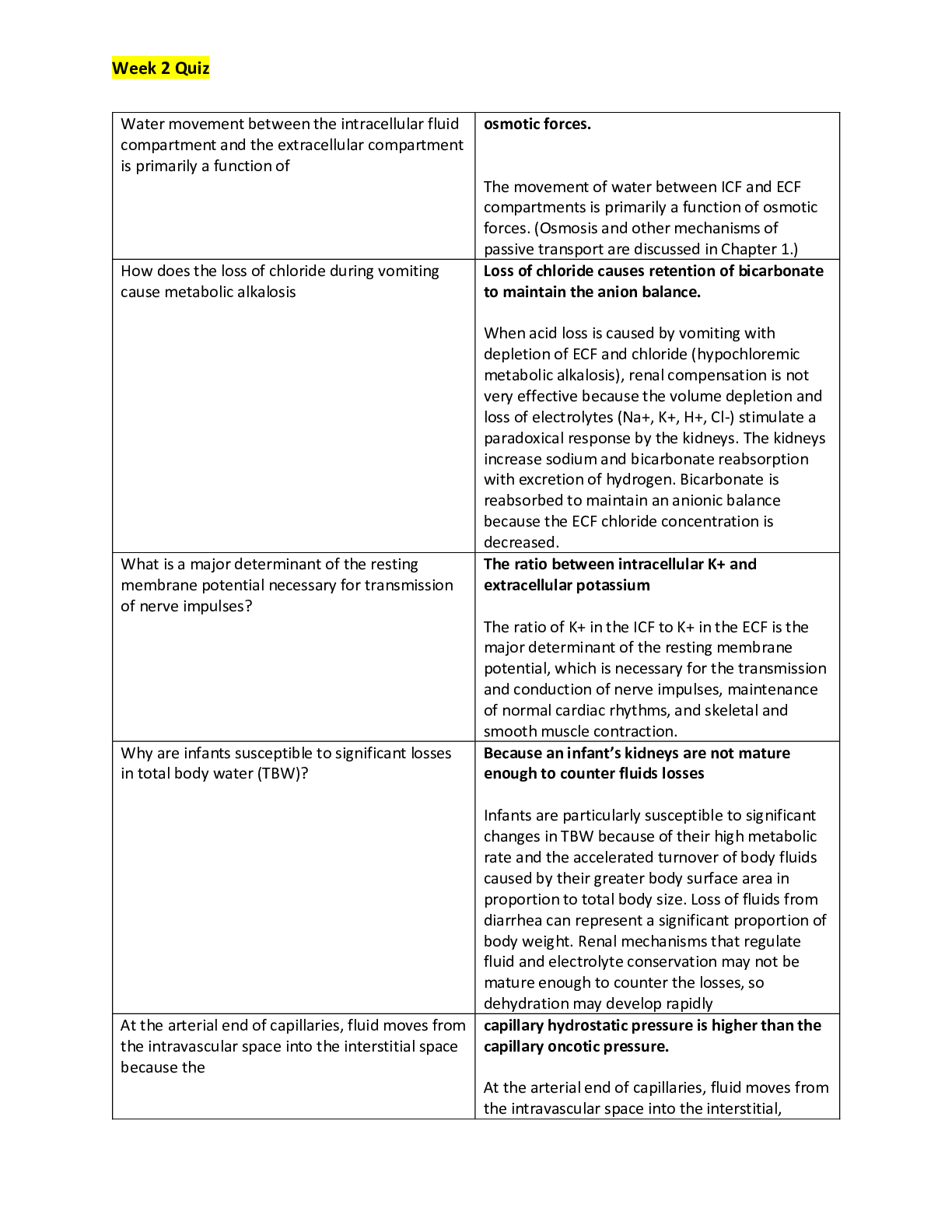
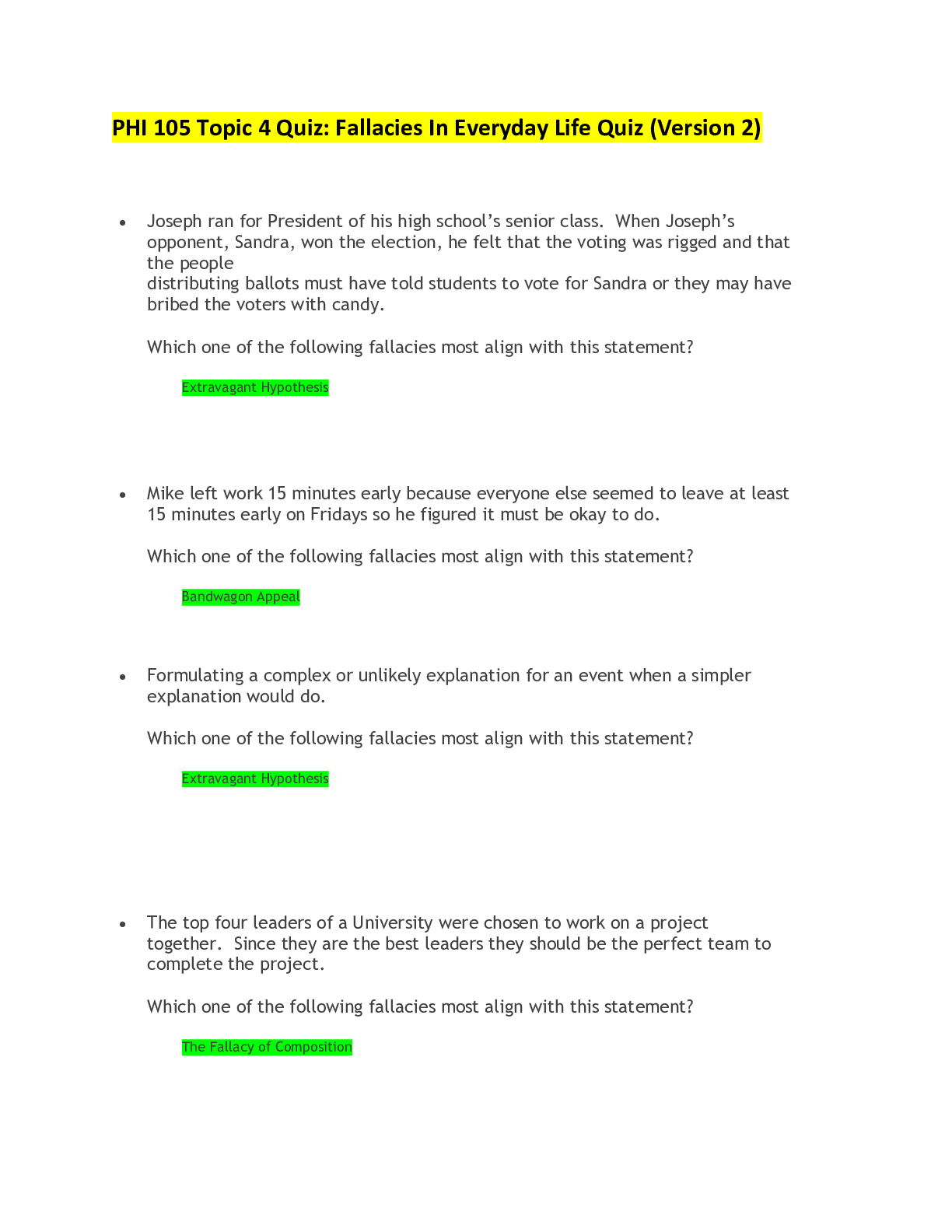
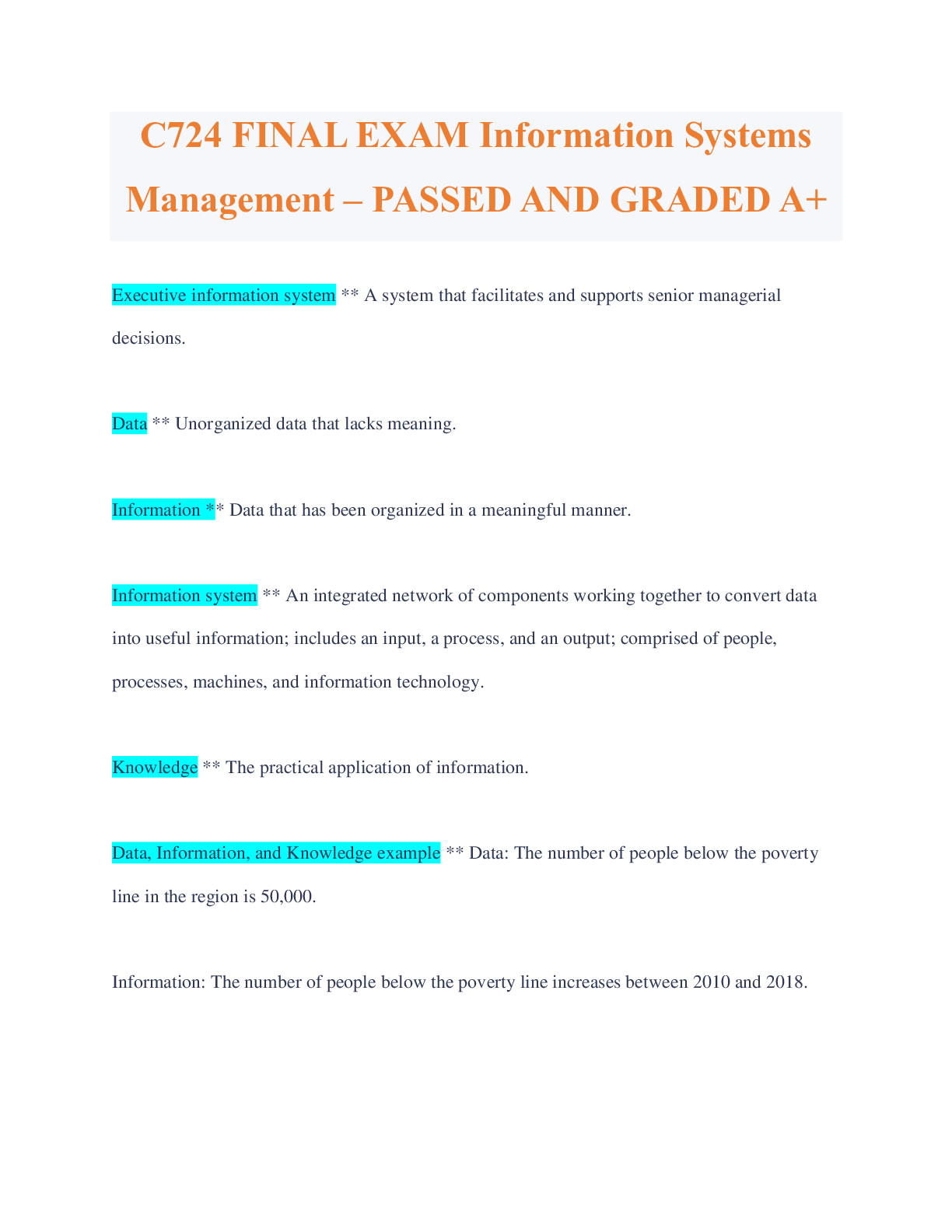
.png)
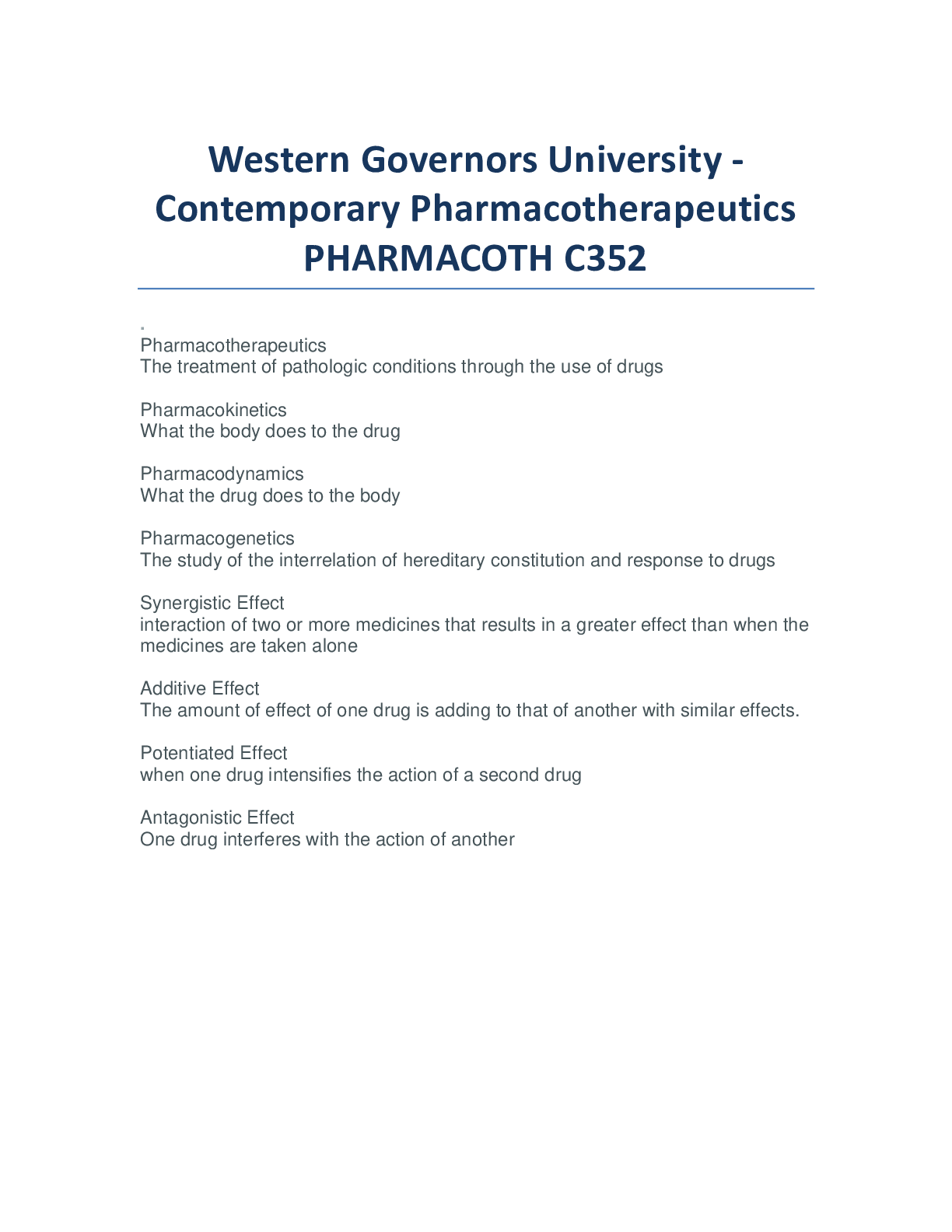

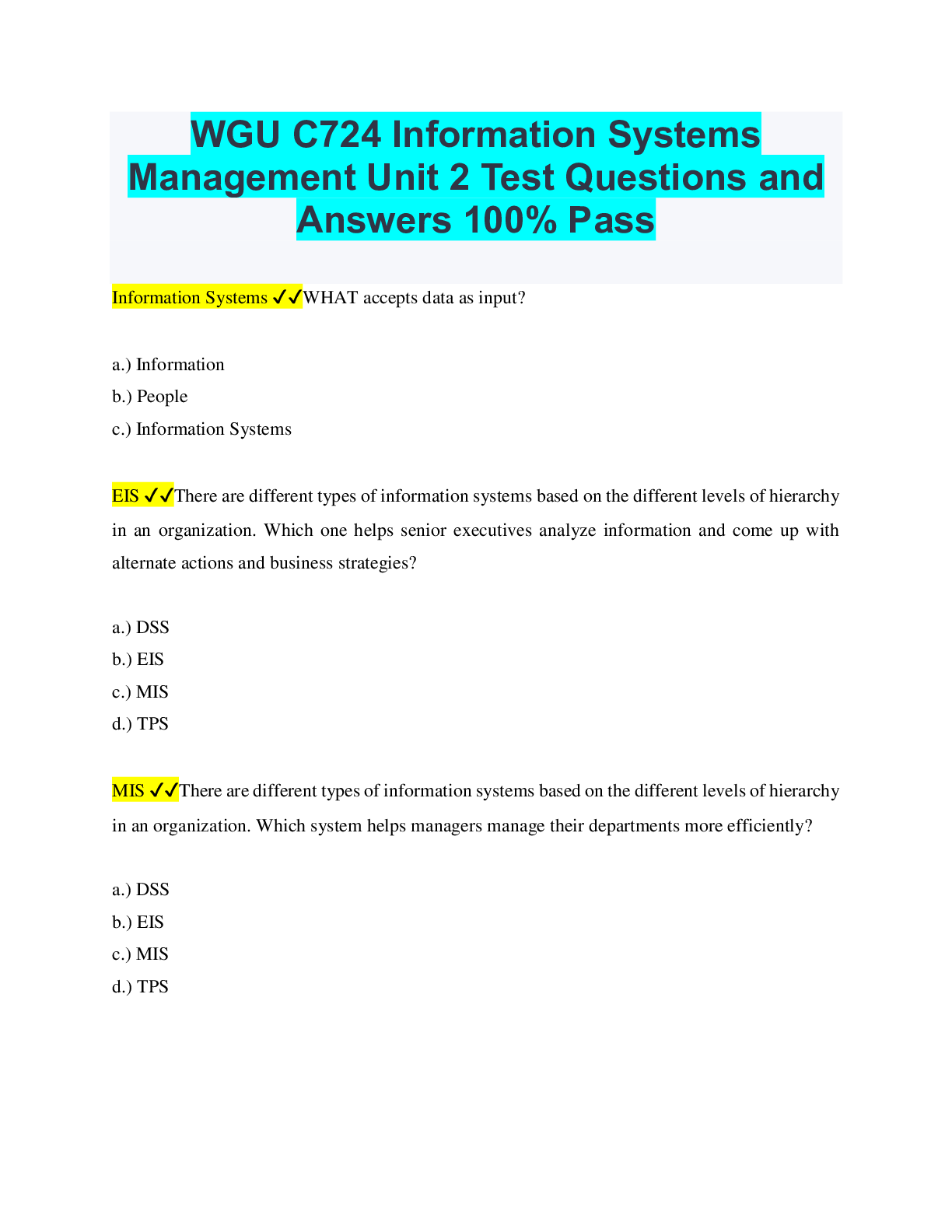

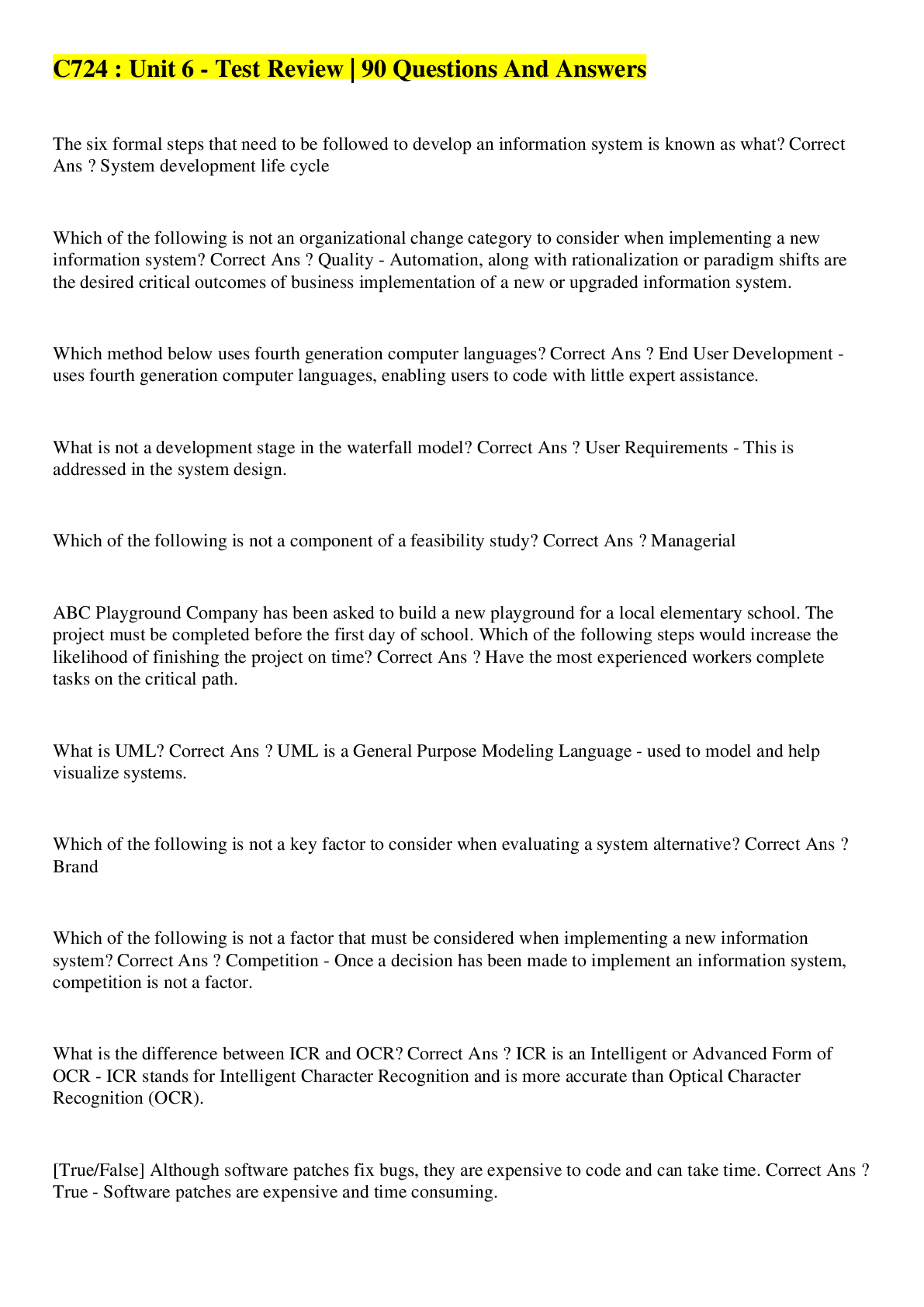
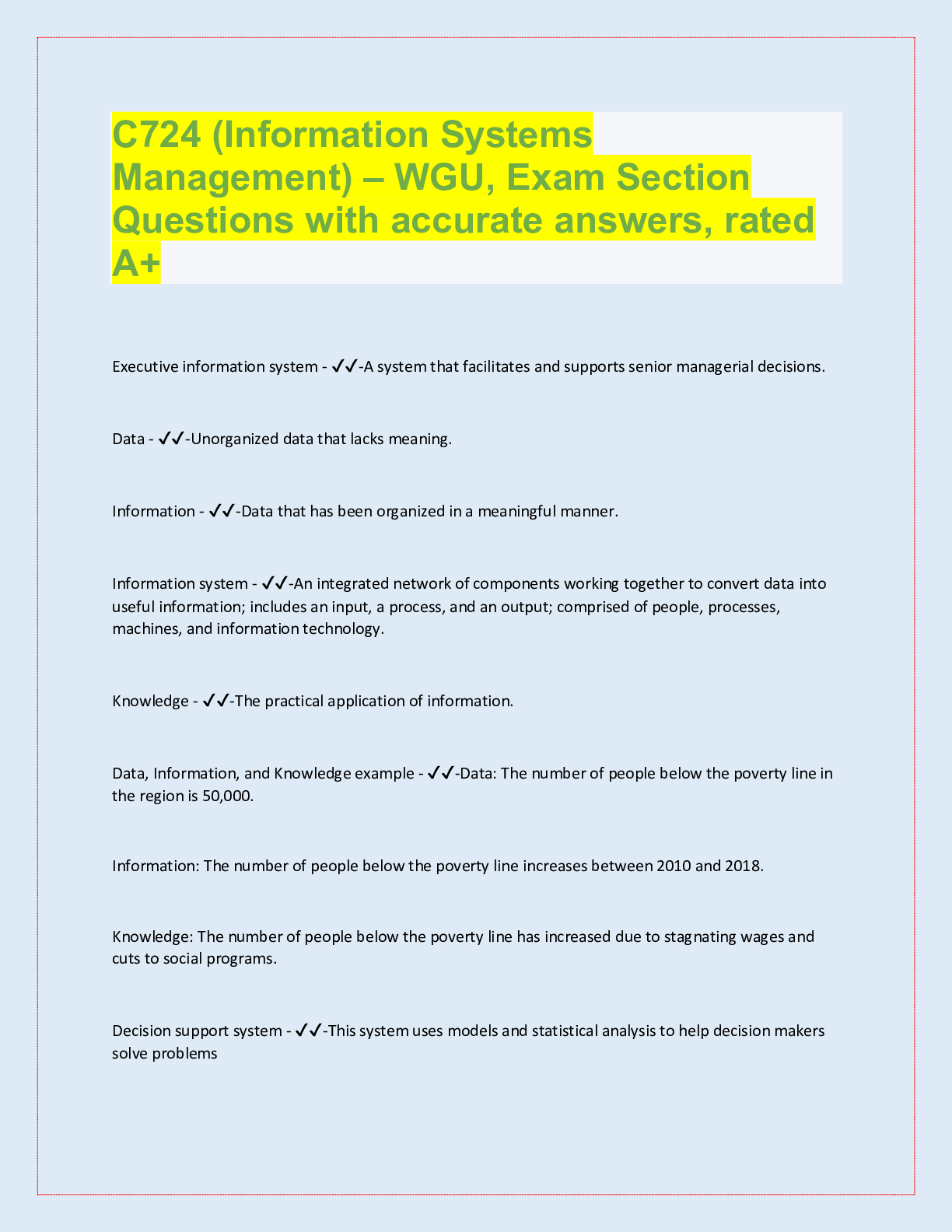
 Notes.png)

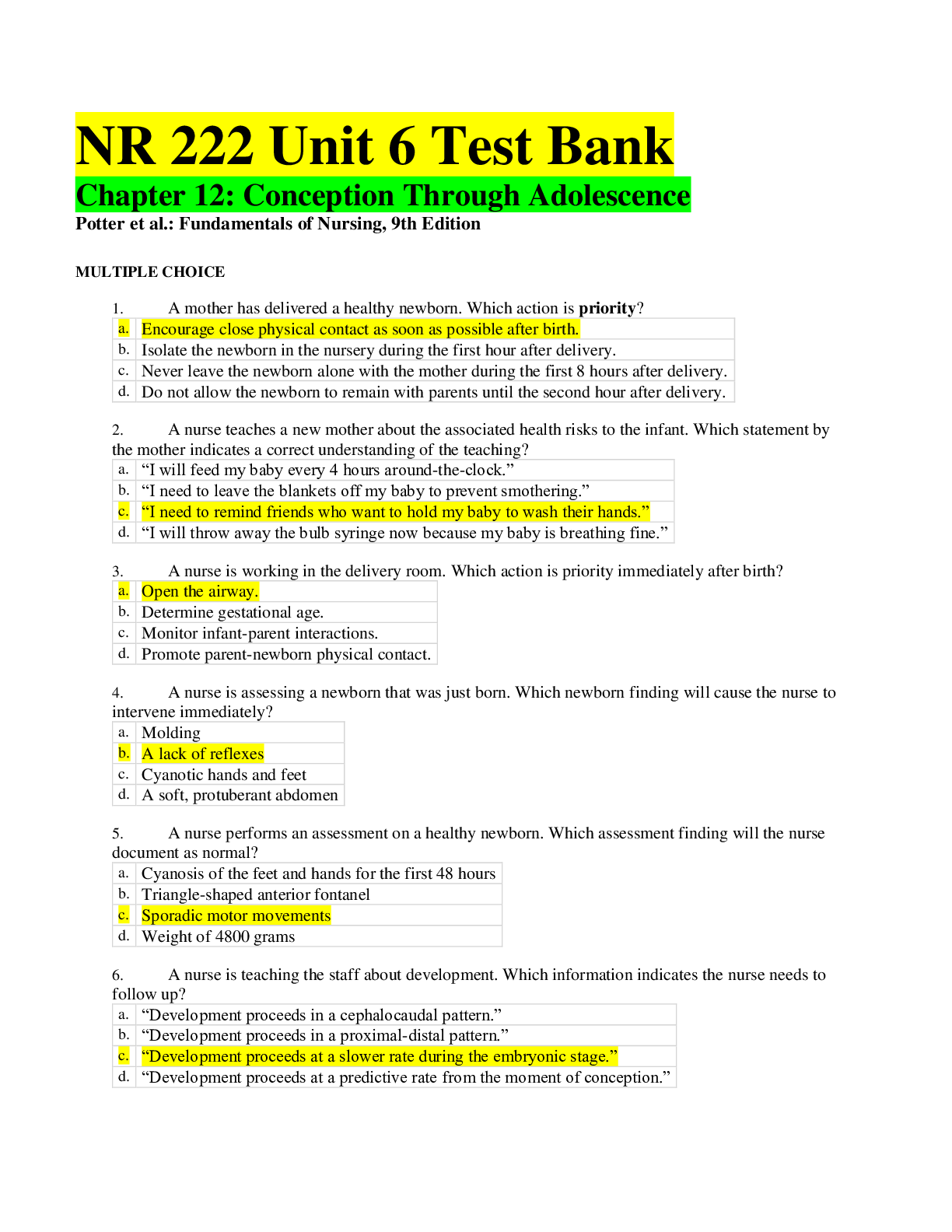


.png)
